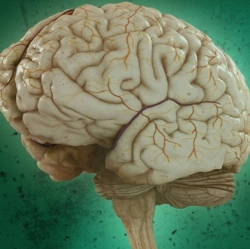
Researchers at the Allen Brain Institute, have developed the first whole human brain map at cellular resolution. It combines neuroimaging and comprehensive mapping of brain regions. This digital atlas will allows researchers to investigate the structural basis of brain function at a resolution never possible before.
The Allen Human Brain Atlas is a unique multi-modal atlas that maps gene expression across the human brain. The model integrates anatomic and genomic information, available data modalities include magnetic resonance imaging (MRI), diffusion tensor imaging (DTI), histology, and gene expression data derived from both microarray and in situ hybridization (ISH) approaches.
Some of the key features include an "all genes, all structures" microarray survey spatially mapped to the MRI, ISH cellular resolution image data for selected genes in specific brain regions, and an annotated human brain atlas guide.
Now with the latest updates to the Human Brain Atlas, users can navigate the brain as easily as using Google Maps. The work was published recently in The Journal of Comparative Neurology.
“Essentially what we were trying to do is to create a new reference standard for a very fine anatomical structural map of the complete human brain,” says Ed Lein, principal investigator on the project. “It may seem a little bit odd, but actually we are a bit lacking in types of basic reference materials for mapping the human brain that we have in other organisms like mouse or like monkey, and that is in large part because of the enormous size and complexity of the human brain.”
The project, which has already been running for five years, focused on a single healthy postmortem brain from a 34-year-old woman. The research team took a complete scan of the organ, which allowed them to capture both overall brain structure and the connectivity of brain fibers.
The researchers next sliced the brain into 2,716 very thin sections for fine-scale, cellular analysis.
The key step in creating a complete brain atlas was combining broad-scale, high-resolution brain imaging data with detailed cellular-level mapping, which the researchers then annotated with the brain structures they identified. This work is now publically available as the Allen Human Brain Atlas.
"Because of the labor intensiveness of doing this, it always lives in the scale of a single brain,” Lein says, “and you really go to town in trying to understand everything you can about that one individual."
Other researchers argue that the work is too discrete, being from one subject, and that it will be inconclusive to make any broad ranging neuroscience observations from the data.
A different map of the brain was published earlier this year by the Human Connectome Project. The main difference is the Allen study used only one brain, while the Human Connectome Project mapped 210 brains.
In spite of the critics, the effort marks a marked advance in our understanding of brain anatomy. “There simply hasn’t been a complete map of the human brain as a reference piece of material for anyone studying any part of the brain,” Lein says, “and this is a completely essential part of doing research.”
